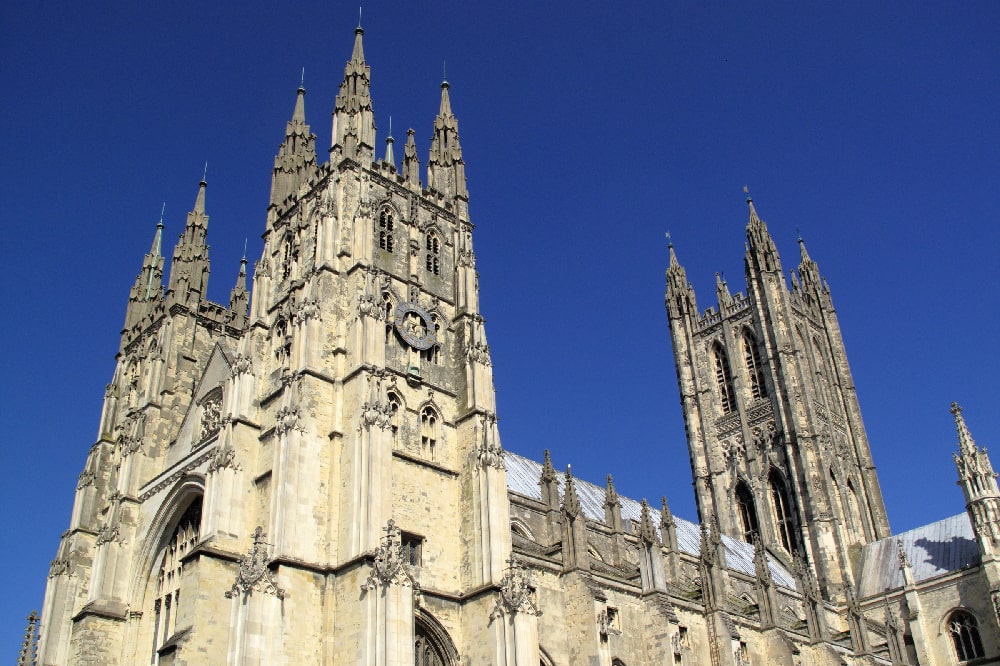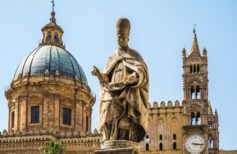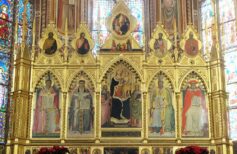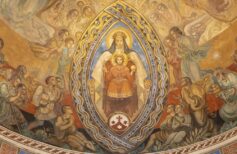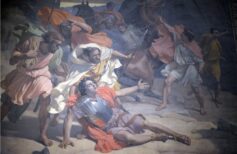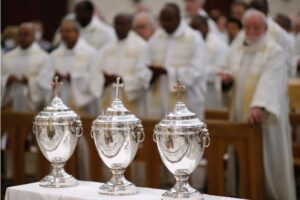St. Augustine of Canterbury, known as the Apostle of England, is adored as a saint by Catholics and Anglicans. His credited for having evangelized England.
Contents [hide]
The greatest merit of St. Augustine of Canterbury lies in his attempt to reunite the Breton Church with the Saxon one, reconfirming Christianity in Britain after the invasions of the German populations from Scandinavia had weakened it. He also attempted to bring the Celtic Christian churches back under Roman control. For these reasons, he deserves to be remembered among the saints who changed the history of the world. He received his commission and his mission from St. Gregory the Great, Pope and Doctor of the Church, who sent him to evangelize England.

The saints that changed the world
The history of Europe and of the Western world as we know them goes through many and constant political and social changes…
The mission of St Augustine of Canterbury
Although Christianity had already arrived in England through the Roman centuries, in the 5th century the massive invasions of Angles and Saxons had brought paganism back to much of the island. The bishop of Rome Gregory (Saint Gregory the Great) decided to counterattack and bring Christianity back to Britain. To do this, he asked for the support of King Ethelbert of Kent, who, despite being Juto, had married Princess Berta, a Christian. It was she who had the new church of San Martino built, dedicated to San Martino di Tours, patron saint of the Merovingian dynasty. Gregory decided that his work of re-evangelization would start from there.

Saint Gregory the Great, Pope and Doctor of the Church
Saint Gregory the Great, “the consul of God”, venerated as a saint and doctor of the Church…
In June 596, forty Benedictine monks from the monastery of Sant’ Andrea sul Celio in Rome were sent to Britain. Leading them was Augustine, their prior.
At first, the latter was very frightened by the prospect of having to confront the Saxons and the Angles, and when he arrived in Provence he backtracked, returned to Rome and asked the Pope to entrust him with another assignment.
But then he let himself be persuaded, and after stopping in France for a while, he was persuaded to go to Britain, on the Isle of Thanet. He was welcomed by the King of Kent and with his help assumed his role as archbishop of Canterbury, where he had an old church rebuilt into a cathedral. From there he began his work of conversion. While the king and all his subjects asked for baptism, Augustine with the help of his monks created other bishoprics in the heart of the territories of the Jutes and Saxons: in Rochester, London and York.

Augustine also attempted to convert the German populations by leveraging their traditions, transforming pagan myths and rituals into Christian celebrations.
At the same time, he undertook to bring the Celtic Christian Churches, which had developed their own independent religious form, back under the aegis of the Church of Rome. Paradoxically, the Celtic Christians wanted to keep themselves detached from the new Catholic converts, the same Germans who had invaded them, and who were now allowing themselves to be progressively evangelized by Augustine.
Augustine’s tomb in Canterbury, in the church of Saints Peter and Paul, has long been a place of pilgrimage, as have many other places dear to devout Christians.

5 places of pilgrimage to go to at least once in a lifetime
God’s action on this Earth leaves a strong mark that attracts us: here are five pilgrimages of faith to be made…
St Augustine of Canterbury as St Paul
Augustine’s conversion from a fearful prior who shuddered at the mere account of the atrocities of which the Angles and Saxons were capable, to a proud apostle of the Church of Rome, capable of converting entire regions with his word alone, makes us think of other miraculous conversions. Let us think of Paul of Tarsus, considered the first great missionary of the Christian Church for his proselyte work and his contribution to spreading the evangelical message throughout the Mediterranean basin. But let us remember that before all this he was a fierce persecutor of Christians. There is a right time and place for everything to be accomplished, and this probably also applies to men, who are not always born invested with a mission, nor endowed with the courage and determination to carry it forward, but in some cases, with time, they can become better than they are and prove themselves capable of great things.

Saint Paul of Tarso: story of a missionary
Saint Paul of Tarso can be considered the first great missionary of the Christian Church…
Saint Augustine of Canterbury evangelizer of England
For every country in the world, or almost, there is a patron saint. Saint Augustine of Canterbury is considered the evangelizer and protector of England, while Saint George is its patron, and like him, there are other saints whose patronage has been associated with a country or a nation. The term Patron derives from the Latin patronus, “protector”, a term with which in ancient Rome was indicated a citizen worthy of respect that guaranteed protection to clientes submitted to him. For the Christian Church, this definition was attributed to a saint who is entrusted with the protection of a certain category of the faithful, defined according to the city or the area in which they live, the profession they perform and so on.
Europe counts as patrons: Saint Benedict of Norcia, Saint Bridget of Sweden, Saint Catherine of Siena, Saints Cyril and Methodius, and Saint Teresa Benedetta of the Cross. As for the countries outside Europe, the patron saints are: Saint Josephine Bakhita, patron saint of Africa, Our Lady of Guadalupe, patron saint of the Americas (especially of the South), Saint Rose of Lima, patron saint of the Philippines, India and Peru and Saint Francis Solano, patron of Argentina, Chile, Bolivia, Paraguay and Peru.
Then for each nation, there are particular patron saints, as for Italy, which has Saint Francis of Assisi and Saint Catherine of Siena, and France which has Mary SS. Assunta, Saint Martin of Tours, Saint Joan of Arc and Saint Therese of Lisieux.

